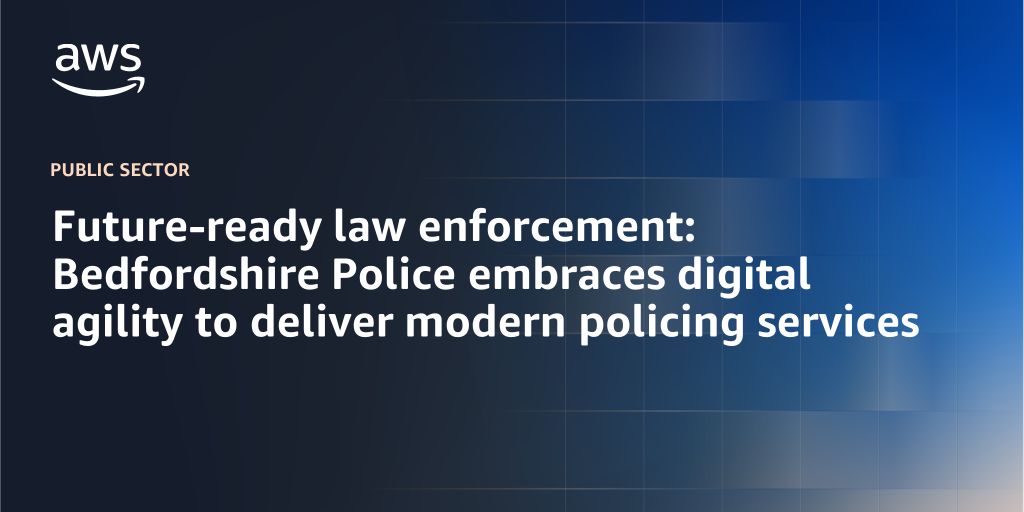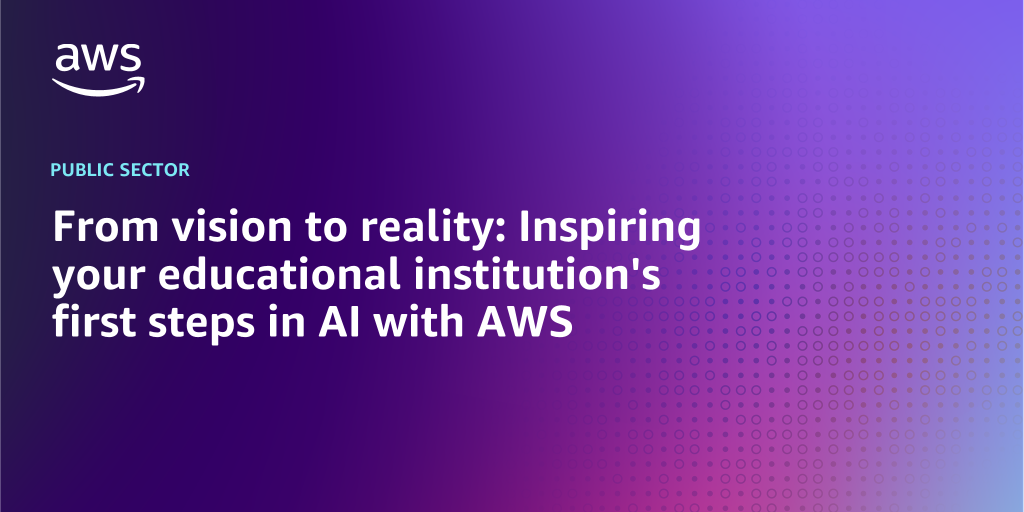AWS Public Sector Blog
Category: Artificial Intelligence
How to use data from the AWS Open Data program in Amazon Bedrock
Many government agencies, like the National Oceanic and Atmospheric Administration (NOAA), participate in the AWS Open Data Sponsorship Program. In this post, we discuss how to use NOAA datasets in the Registry of Open Data on AWS using Amazon Bedrock Knowledge Bases.
Cloud Innovation Center launch at the University of Pittsburgh
In a landmark partnership that promises to transform both health sciences research and athletics, the University of Pittsburgh (Pitt) and Amazon Web Services (AWS) have announced the establishment of the University of Pittsburgh Health Sciences and Sports Analytics Cloud Innovation Center (CIC), powered by AWS. Read this post to learn more.
Future-ready law enforcement: Bedfordshire Police embraces digital agility to deliver modern policing services
A collaboration between the UK’s Bedfordshire Police and AWS resulted in rapid deployment of high-impact, cloud-based solutions that free up officer and staff time and resources. This has helped officers to better serve communities and victims. Based on cloud technology, the model is easily replicable by other law-enforcement organizations.
High-level architecture and components for a generative AI-based RAG solution
In this post, we walk through a step-by-step guide to building your own Retrieval Augmented Generation (RAG) solution on AWS, complete with open-source instructions and best practices. Learn how to harness the same technological foundations that power enterprise-grade proposal automation while maintaining security, compliance, and content quality.
Going beyond vibes: Evaluating your Amazon Bedrock workloads for production
Many organizations validate their generative AI–based workloads on their emotional reaction to a foundation model’s output instead of real testing criteria. In this post, we show you how you can move away from vibe testing and effectively evaluate your Amazon Bedrock workloads for production.
6 EdTech AI trends: How artificial intelligence is reshaping education
At AWS, we work with EdTechs of all sizes, giving us unique insight into how AI is shaping the industry. Based on our work with EdTechs and educational institutions around the world, we’ve identified six key trends shaping the future of AI in education.
How the University of Johannesburg uses AI chatbots to increase student engagement and reduce costs
In this post, we discuss how the University of Johannesburg worked with CX/SIM, an AWS Partner, to develop an AI-powered service automation chatbot that increased student engagement and reduced costs.
From vision to reality: Inspiring your educational institution’s first steps in AI with AWS
To support education leaders on their AI journey, we’ve developed a practical guide that maps real-world challenges to proven AI use cases. While not exhaustive, these examples serve as inspiration—highlighting what others have achieved and helping you explore how AI can address your institution’s priorities
5 ways AWS empowers GovTech innovation in 2025
Amazon Web Services (AWS) has been a trusted collaborator and advisor to GovTechs for years, providing the tools, expertise, and support they need to build and grow their solutions effectively. In this blog post, we discuss five key ways AWS supports GovTechs in their mission to serve government agencies and citizens.
Bahrain’s cloud-first success story
Cloud computing, automation, and AI are driving a new wave of modernization in public services. They’re helping to make them more accessible, responsive, and cost-effective. The Kingdom of Bahrain shows how this can be done. In this blog, we explore how, through a cloud-first strategy, the country has modernized its public services, boosted economic growth, and developed a culture of innovation.









